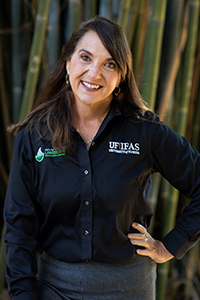Wendy's Wanderings
February 10, 2022
Ways to save this Spring
Have you noticed the increase of prices at the stores? It is not just at the grocery store either. Higher prices have found their way to the garden centers and it is eating into my plant budget. This makes me consider a few coping strategies to stretch a dollar in the garden and the landscape.
Consider what is free. Before you head out to the store to purchase items for your new project, really look at what you already have. Is there wood in your shed that could be used for a raised bed? Did you see a discarded dresser on the side of the road? Those drawers make good small raised beds, too. Do you have leftover containers or hanging baskets? Use these to refresh your garden without a trip to the store. Also never underestimate the power of asking your group of friends; your treasure may be someone else's trash.
Proper mulching is the most economical way to keep weeds out of your landscape beds and save irrigation water. Recycled or municipal mulch is very cost effective, and sometimes free, but some folks don't like the look of recycled mulch. If you demand a higher aesthetic from your mulch, apply recycled mulch at a depth of 2 inches and top with 1 inch of pine bark or your desired good-looking mulch. Then your mulch will be the proper depth of 3 inches and nobody needs to know what the bottom layer is.
Buy smaller. If you are buying potted plants it is ok to buy the smaller version. Often times one size down is much less expensive than an older plant and the difference may only be 6-12 months of growing time. If you don't mind a little wait you can save some money. Also when shopping for plants look for ones that have multiples in a pot or plants that can be divided when you install them.
Start from seeds whenever possible. Even though seed prices have increased too, a package of seeds is much less costly than a potted plant. This is especially true for vegetables, herbs, and annual flowers. Many local public libraries have seed libraries that offer packages of seeds for free. If you are starting flowers from seeds pick species that are easy to direct seed, like zinnias, marigolds, sunflowers, and milkweed. That sounds like a low-cost, beautiful butterfly/pollinator patch. Learn more about starting from seed in this article on UF/IFAS Gardening Solutions.
Make your own seed-starting cups. It is easy to make seedling starter pots from strips of newspaper, or from cut paper towel tubes or even recycled small yogurt cups with holes punched in the bottom for drainage. It is important that the pots are shallow and sit in a tray. You don't need to buy a seed-starting kit; you really can make your own. Learn more in Starting Transplants Indoors on Gardening Solutions.
Always remember to simplify; use plants that are well suited for your site. If they need full sun grow them in full sun, if they need well-drained soil, grow them in a sandy area. In other words, put the right plant in the right place. This first principle of Florida-Friendly Landscaping™ will save you money and time.
-- Wendy Wilber
Return to the February Neighborhood Gardener

